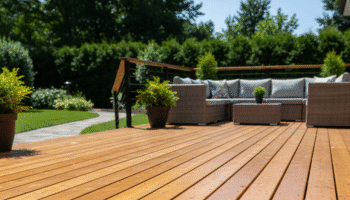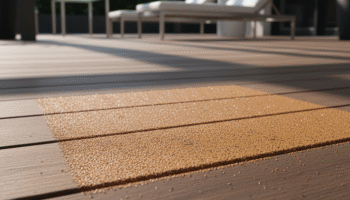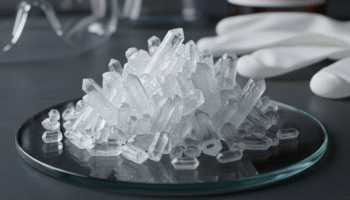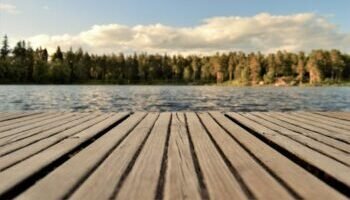Which Protection Method Lasts Longer?
If you’ve ever asked yourself “Should I seal or stain my deck?”, you’re not alone. Many homeowners think sealers and stains are the same. They’re not. This guide cuts through the confusion with side-by-side comparisons, real-world longevity data, long-term costs, and clear recommendations based on wood type and climate—so you can choose the protection that actually lasts.
Myth to bust upfront:
All modern deck stains are also sealers. Stain = sealer + pigment. Applying a “sealer after staining” is usually redundant and can even create film-on-film build that peels.
Understanding the Core Difference: Sealer vs Stain
What Is a Deck Sealer?
A clear or near-clear waterproofer designed to repel moisture. Some sealers include mild UV inhibitors, but without pigment they cannot block enough sunlight to stop graying. Expect a natural look that changes to silver-gray over time, especially in sunny areas.
What Is a Deck Stain?
A penetrating finish with sealer + pigment. The sealer component repels water; the pigment blocks UV (the #1 cause of wood graying and surface fiber breakdown). Stains come in four main categories: clear, semi-transparent, semi-solid, and solid (more pigment = more UV protection).
The Pigment Factor: Why It Matters
UV rays break down lignin in wood, turning it gray and fuzzy. Pigment acts like sunscreen: the more you have (semi-solid/solid), the longer the deck resists UV damage. Clear sealers lack meaningful pigment, so they protect against water but not sunlight.
Protection Comparison: What Each Product Actually Does
UV Protection: Stains Win (Here’s Why)
-
Clear sealer: Minimal UV defense → gray in months in full sun.
-
Semi-transparent stain: Good UV defense while showing grain.
-
Semi-solid stain: Strong UV defense; grain visibility reduced.
-
Solid stain: Maximum UV block; paint-like look; can hide imperfections.
Water Resistance: Both Protect Differently
-
Sealer: Prioritizes water repellency; typically beads water well initially.
-
Stain: Water repellency + UV defense; generally more balanced and longer-lasting because pigment slows surface erosion.
Mold & Mildew Resistance
Most quality products include mildewcides, but porous or shaded decks still need airflow, proper gaps, and periodic cleaning. Oil-based products can nourish surface mold if maintenance lapses; water-based formulas stay cleaner visually but need correct prep.
Wood Preservation: Long-Term Effects
-
Sealer-only cycles can become a maintenance treadmill: frequent re-coats, progressive graying, and more fiber erosion.
-
Pigmented stains slow UV degradation, reduce checking/splitting, and extend the useful life of the deck surface.
Longevity Breakdown: Real-World Duration Data
Actual lifespan depends on sun exposure, foot traffic, prep quality, product chemistry, and climate. These ranges reflect typical results on well-prepped decks.
Clear Sealers: 1–2 years
Best for a short-term natural look or as a placeholder on brand-new decks before choosing a color. Expect early graying in sunny zones.
Semi-Transparent Stains: 2–3 years
Balanced look and protection. Shows grain, blocks substantial UV, and is easier to refresh—often without full stripping if you re-coat on schedule.
Semi-Solid Stains: 3–5 years
Heavier pigmentation for stronger UV defense. Great for older decks or high-sun exposure where longevity matters.
Solid Stains: 4–7 years
Top UV shield. Ideal when hiding past discoloration or repairs. Caveat: if applied too thick or over failing coats, peeling risk increases—surface prep is non-negotiable.
Pressure-Treated Lumber Care
When to Stain & What Products Work If you just built a brand-new green deck…
Non-Slip Deck Coatings
Grip Additives vs Textured Stains vs Strips Safety-first, solution-oriented guide to stop slip-and-fall accidents on…
Deck Cleaning Solutions
Oxalic Acid vs. Sodium Percarbonate Mini-plan (what you’ll get): Layman-friendly chemistry so you pick the…
Quick Comparison Table
| Finish Type | Look | Typical Longevity | UV Defense | Ease of Refresh |
|---|---|---|---|---|
| Clear Sealer | Natural → Grays | 1–2 yrs | Low | Easy (clean & reapply) |
| Semi-Transparent Stain | Grain visible | 2–3 yrs | Medium-High | Moderate (clean, light scuff, re-coat) |
| Semi-Solid Stain | Grain muted | 3–5 yrs | High | Moderate (prep matters) |
| Solid Stain | Opaque/paint-like | 4–7 yrs | Very High | Harder if peeling (may need strip/sand) |
Cost Analysis: Initial Investment vs Long-Term Value
Assuming a 300 sq ft deck:
| Finish Type | Typical Price/gal | Coverage (sq ft/coat) | Coats | Approx. Product Needed | Ballpark Material Cost | Annualized Cost (by lifespan) |
|---|---|---|---|---|---|---|
| Clear Sealer | $25–$40 | 250–350 | 1 | ~1 gal | $25–$40 | ~$15–$40/yr |
| Semi-Transparent Stain | $35–$55 | 200–300 | 2 | ~2–3 gal | $70–$165 | ~$25–$80/yr |
| Semi-Solid Stain | $45–$65 | 200–275 | 2 | ~2–3 gal | $90–$195 | ~$20–$65/yr |
| Solid Stain | $40–$60 | 250–350 | 2 | ~2 gal | $80–$120 | ~$12–$45/yr |
Takeaway: While semi-solid/solid stains can cost more up front, their UV longevity often makes them cheaper per year—with the caveat that poor prep or over-application can lead to peeling and higher refresh costs.
Further reading:
Application Difficulty: DIY Friendliness Compared
- Clear sealer: Fastest. One coat, roller/pump sprayer + back-brush.
- Semi-transparent: Two thin coats; tolerant of minor flaws; forgiving to refresh.
- Semi-solid: Two controlled coats; careful back-brushing to avoid lap marks.
- Solid stain: Most sensitive to prep and film thickness; follow labels for dry times, temperature, and moisture content.
Aesthetic Differences: Natural vs Enhanced Look
- Want the wood’s natural color and don’t mind graying? Choose clear sealer.
- Want to show grain and keep color longer? Semi-transparent stain.
- Want even color and superior UV defense? Semi-solid.
- Want to hide flaws or color-correct? Solid stain.
Can You Use Both? The Sealer + Stain Debate
Short answer: Usually no. Because stain already seals, adding a separate sealer can create compatibility issues:
- Penetrating + film-forming layers can trap moisture → peeling.
- If you must layer, it generally should be stain-only from the same system. Always check the manufacturer’s label for re-coat and compatibility rules.
Best Choice by Wood Type
Pressure-Treated Pine
- Pick: Semi-transparent for newer boards; semi-solid for older/high-sun decks.
- Why: Balances UV defense with breathability. Avoid heavy film build.
Cedar & Redwood
- Pick: Semi-transparent or semi-solid.
- Why: Natural color looks great with translucent tones; pigment slows photo-degradation without burying the grain.
Tropical Hardwoods (Ipe, Cumaru, Teak)
- Pick: Penetrating oils with light pigment or tinted penetrating “hardwood” formulas.
- Why: Very dense woods resist penetration; clear oils look beautiful but gray faster. Avoid thick films.
Climate Considerations: Which Works Better Where
| Climate | Primary Stress | Recommended Finish | Notes |
|---|---|---|---|
| Coastal (salt, UV, wind) | UV + salt spray + abrasion | Semi-solid or solid stain | Pigment resists UV; re-coat schedule beats clear sealers by 2–3×. |
| Humid/Subtropical | Mold/mildew + frequent rain | Semi-transparent/semi-solid (breathable) | Regular cleaning; avoid thick films that trap moisture. |
| High-Sun/Dry | Intense UV | Semi-solid or solid stain | Maximize pigment; inspect handrails/top boards yearly. |
| Freeze-Thaw | Moisture cycling + ice | Semi-transparent/semi-solid | Penetration and flexibility help resist cracking/peel. |
Common Mistakes When Choosing Deck Protection
- Sealing after staining (redundant; can cause failure).
- Skipping prep (cleaning, brightening, dry-time, and moisture checks).
- Over-applying (thick coats = film, stickiness, peeling).
- Color too light in high sun (insufficient pigment → early fade).
- Mismatching chemistry (oil over water or vice versa without proper prep).
How to Switch from Sealer to Stain (or Vice Versa)
- Test water absorption. If droplets bead, the surface still has sealer—wait or clean/degloss until wood accepts water.
- Deep clean + brighten. Use a deck cleaner, then a wood brightener to neutralize and open pores. Rinse thoroughly.
- Dry to spec. Most labels call for wood moisture < 15% and 24–48 hrs dry weather window.
- Choose a penetrating product compatible with your wood and climate.
- Apply thin, even coats; back-brush immediately; respect re-coat windows.
- Future maintenance: Light clean + maintenance coats before failure—avoid letting coatings erode completely.
The pros and cons of sealers versus stains make the most sense when placed within the seasonal framework of the Deck Care Encyclopedia, and analyzed alongside traction results from Non-Slip Deck Coatings.
Decision Matrix: Choose the Right Product for Your Needs
| Your Priority | Choose | Why |
|---|---|---|
| Natural look (okay with graying) | Clear sealer | Water repellency with minimal color change |
| Show grain but extend color life | Semi-transparent stain | Balanced UV protection + aesthetics |
| Longest life without paint look | Semi-solid stain | High UV block; fewer re-coats |
| Hide flaws / color-correct | Solid stain | Maximum coverage and UV block |
| Premium hardwood deck | Penetrating oil (light tint) | Designed for dense species; re-coat cycles vary |
Quick Quiz: What’s Right for Your Deck?
Check all that apply, then see your result.
- ☐ I want a natural look and don’t mind gray.
- ☐ My deck gets intense sun most of the day.
- ☐ I need the longest interval between re-coats.
- ☐ The boards are older or have repairs I’d like to hide.
- ☐ It’s a premium hardwood (ipe/teak/cumaru).
- ☐ I prefer easy maintenance coats over full stripping.
Results:
- Mostly first box → Clear sealer.
- Sun + long interval + easy maintenance → Semi-solid.
- Show grain but keep color → Semi-transparent.
- Hide flaws / max UV → Solid stain.
- Premium hardwood → Penetrating oil (tinted).
FAQs Using Your Long-Tail Questions
Do I need to seal after staining my deck?
No. Stain already seals. Adding a separate sealer usually doesn’t help and can cause adhesion issues.
How long does clear deck sealer last compared to stain?
Typically 1–2 years vs 2–7 years for pigmented stains (semi-transparent to solid), depending on climate and exposure.
What’s the difference between a penetrating sealer and a film-forming stain?
Penetrating products soak in and move with the wood; film-forming products build a surface layer with higher peel risk if over-applied or moisture gets trapped.
Can I apply sealer over old deck stain without stripping?
Usually not recommended. You’ll mix chemistries and layer films. Instead, refresh with the same stain system after proper cleaning and surface prep.
Deck stain with built-in sealer vs separate products?
Use all-in-one penetrating stains (standard today). Separate “stain then sealer” steps add cost and failure risk.
UV protection deck sealer with no color change—does it exist?
Clear products may include UV inhibitors, but without pigment you won’t get meaningful UV block. To stop graying, you need tint/pigment.
Water-based stain vs oil sealer—what lasts longer?
Depends on formulation and prep, but for UV longevity, a quality pigmented water- or oil-based stain generally outlasts a clear oil sealer. Choose based on wood species, climate, and manufacturer guidance.
Pro Insight After Refinishing Thousands of Decks
The most common failure we see is clear-sealed decks turning gray within months under high sun. The second is homeowners saying, “I’ll stain then seal,” not realizing stain already seals. For 95% of decks, a pigmented penetrating stain wins on UV protection, lifespan, and maintenance simplicity.
Editor’s Notes & Good Practices
For product labels and technical guardrails, consult recognized standards and manufacturer datasheets (e.g., coating manufacturer prep guides, moisture specifications, and application temperatures). Prioritize thin coats, back-brushing, and maintenance re-coats before failure to avoid stripping.
Turn this choice into a 10-year plan by climate and wood species with the Exterior Wood Care Guide, and plug the result into deck-specific steps in the Deck Care Encyclopedia. If your deck faces salt air or full sun, see which formulas actually hold up: Best Deck Stain for Coastal Climates.





